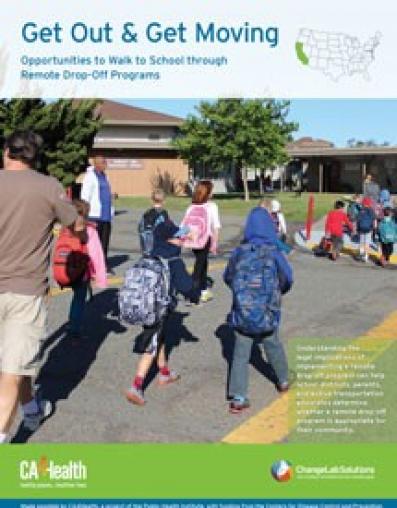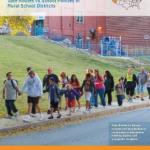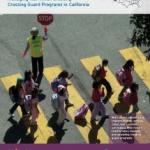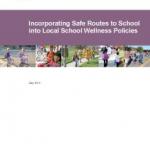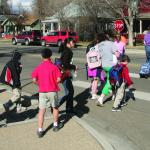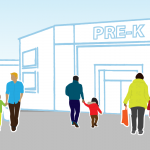Get Out & Get Moving
Opportunities to walk to school through remote drop-off programs
As the SRTS movement continues to gain momentum across the country, it is clear that in many communities, particularly rural ones, not all children can easily and safely walk or bicycle to school.
Even the very best programs do little for students who live too far away or whose walk to school is obstructed by an unsafe physical or social situation such as a dangerous highway or a high-crime hot spot.
Remote drop-off programs, also called “park and walk” programs, are a low-cost way to get more children out of their parents’ cars and onto their own feet, allowing them to take advantage of the many benefits associated with walking to school. Remote drop-off programs designate one or more sites within walking distance of a school where parents, and sometimes school buses, drop students off in the morning so they can walk the rest of the way. Because prohibitively long distances keep many students in rural districts from walking to school, the need for remote drop-off programs can be even greater in rural areas.
CA4Health, in collaboration with ChangeLab Solutions, developed this fact sheet to help districts, parents, and active transportation advocates understand the legal implications of implementing a remote drop-off program and determine whether it is appropriate for their community. This fact sheet also includes a cost-benefit worksheet for districts to assess the relative risks of implementing a remote drop-off program versus existing drop-off routines.
CA4Health is the Public Health Institute’s Community Transformation Grant.
